Advertisements
Advertisements
Question
Observe the following figure and answer the questions.
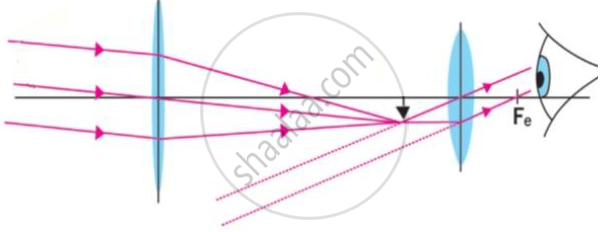
a) Which optical instrument shows arrangement of lenses as shown in the figure?
b) Write in brief the working of this optical instrument.
c) How can we get different magnifications in this optical instrument?
d) Draw the figure again and labelled it properly
Solution
a) Arrangement of lenses shown in the figure is refracting telescope.
b) 1) object lens collect the light coming form the distant object and forms the image
2)The image works as object for the eye piece which forms the final image.
c) We can get different magnifications by using the eye piece with different focal lengths.
d)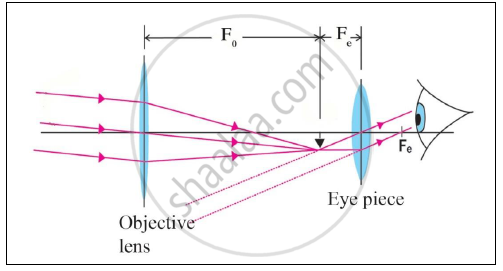
APPEARS IN
RELATED QUESTIONS
A student is using a convex lens of focal length 18 cm to study the image formation by it for the various positions of the object. He observes that when he places the object at 27 cm, the location of the image is at 54 cm on the other side of the lens. Identify from the following diagram the three rays that are obeying the laws of refraction and may be used to draw the corresponding ray diagram.

(A) 1, 2 and 4
(B) 1, 3 and 5
(C) 2, 4 and 5
(D) 2, 3 and 4
"A lens can form a magnified erect image as well as magnified inverted image of an object placed in front of it." State the nature of this lens and draw ray diagrams to justify the above statement. Mark the positions of O, F and 2F in the diagram.
Write one condition where it does not bend when entering a medium of different optical density.
An object is placed at a distance of 12 cm from a convex lens of focal length 8 cm. Find :
1) the position of the image
2) nature of the image
Complete the following table:
| Instrument | Number of Convex Lenses |
Use |
| Simple Microscope | .............. | .............. |
| Compound Microscope | .............. | .............. |
| Telescope | .............. | .............. |
A beam of light travelling in air is incident of water. Draw a ray-diagram indicating the change in its path in water.
A ray of light travelling in water emerges into air. Draw a ray-diagram indicating the change in its path.
Draw a labelled ray diagram to show the angle of incidence and the angle of refraction for a refracted ray of light.
Draw a labelled ray diagram to show how a ray of light passes through a parallel sided glass block:
if it hits the glass block at 90° (that is, perpendicular to the glass block)
Fill in the following blank with suitable word:
The image in a convex lens depends upon the distance of the ........... from the lens.
List some things that convex lens and concave mirror have in common.
A convex lens has a focal length of 10 cm. At which of the following position should an object be placed so that this convex lens may act as a magnifying glass?
(a) 15 cm
(b) 7 cm
(c) 20 cm
(d) 25 cm
A burning candle whose flame is 1.5 cm tall is placed at a certain distance in front of a convex lens. An image of candle flame is received on a white screen kept behind the lens. The image of flame also measures 1.5 cm. If f is the focal length of convex lens, the candle is placed:
(a) at f
(b) between f and 2f
(c) at 2f
(d) beyond 2f
Describe the nature of image formed when an object is placed at a distance of 30 cm from a convex lens of focal length 15 cm.
A convex lens produces an inverted image magnified three times of an object placed at a distance of 15 cm from it. Calculate focal length of the lens.
Find the nature, position and magnification of the images formed by a convex lens of focal length 0.20 m if the object is placed at a distance of:
0.50 m
Which type of lenses are:
thicker in the middle than at the edges?
How would a pencil look like if you saw it through How would a pencil look like if you saw it through
What would be the diameter of the image of the flower on the film?
What type of lens is used to correct
hypermetropia
What kind of lens is used to correct
long-sightedness?
The focal length of a thin convex lens is ______ than that of a thick convex lens.
A convex lens forms an image of an object equal to the size of the object. Draw a diagram to illustrate it.
A convex lens forms an image of an object equal to the size of the object. State two more characteristics of the image.
State two applications of a convex lens.
When you focus the image of a distant flag, whose shape is given below, on a screen using a convex lens, the shape of the image as it appears on the screen is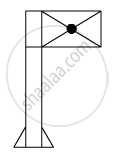
(A)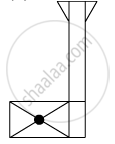
(B)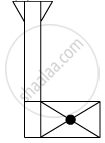
(C)
(D)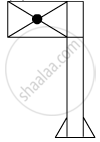
(a) What type of a lens can be used as a magnifying glass?
(b) Show by a ray diagram the formation of a real image by simple magnifying lens.
The focal length of a lens is positive. In this case, state the kind of lens.
If an object is placed in front of a convex lens beyond 2F1, then what will be the position, relative size, and nature of an image which is formed? Explain with a ray diagram.
State the position of object, position of image, nature of image when: Convex lens is used as objective lens of astronomical telescope.
Why do we say that the ‘2F’ and ‘F’ points of a convex lens can be regarded as a sort of ‘turning points’ as far as the nature of the image formed by it is concerned?
Define the principal focus of a convex lens.
How will you determine the focal length of a convex lens by the plane mirror method?
Diagram shows an object AB placed on the principal axis B of a convex lens placed in air. F1 and F2 are the two foci of the lens.
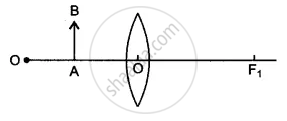
(i) Copy the diagram:
Draw a ray of light starting from B and passing through O. Show the same ray after refraction by the lens. Draw another ray from B which passes through F2 after refraction by the lens. Locate the final image
(ii) Is the image real or virtual?
Object at 2F1 of a convex lens : Image at 2F2 : : Object at F1 : _______
Which of the following statements is true?
 |
 |
The above images are that of a specialized slide projector. Slides are small transparencies mounted in sturdy frames ideally suited to magnification and projection since they have a very high resolution and a high image quality. There is a tray where the slides are to be put into a particular orientation so that the viewers can see the enlarged erect images of the transparent slides. This means that the slides will have to be inserted upside down in the projector tray.
To show her students the images of insects that she investigated in the lab, Mrs. Iyer brought a slide projector. Her slide projector produced 500 times enlarged and inverted image of a slide on a screen 10 m away.
a. Based on the text and data given in the above paragraph, what kind of lens must the slide projector have?
b. If v is the symbol used for image distance and u for object distance then with one reason state what will be the sign for `"𝑣"/"𝑢"` in the given case?
c. A slide projector has a convex lens with a focal length of 20 cm. The slide is placed upside down 21 cm from the lens. How far away should the screen be placed from the slide projector’s lens so that the slide is in focus?
OR
c. When a slide is placed 15 cm behind the lens in the projector, an image is formed 3 m in front of the lens. If the focal length of the lens is 14 cm, draw a ray diagram to show image formation. (not to scale)
Distinguish between Concave lens and Convex Lens.
